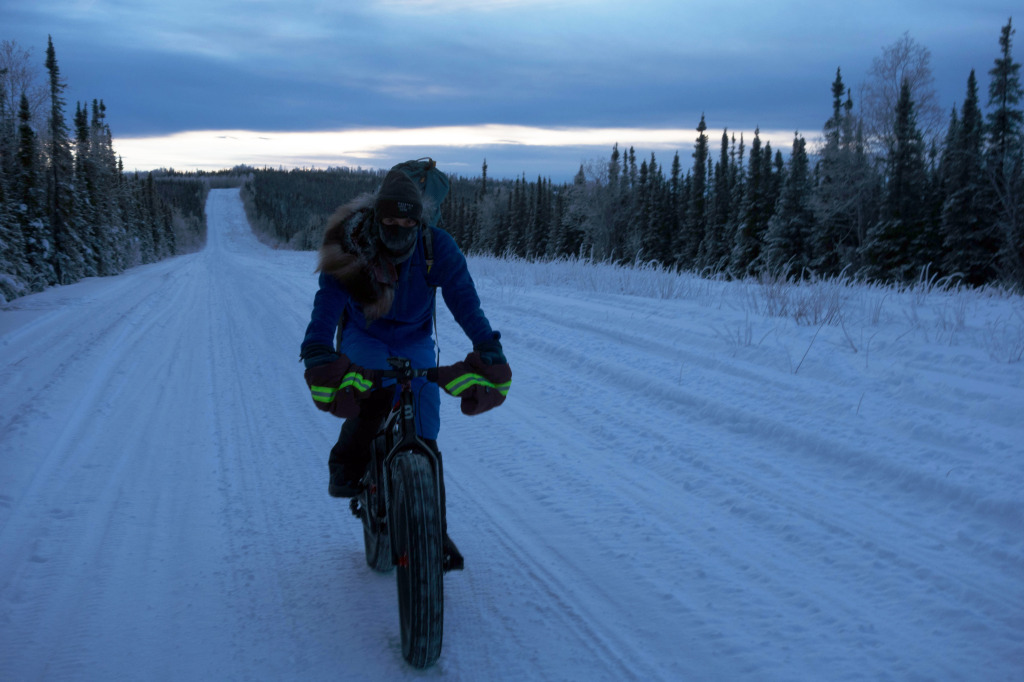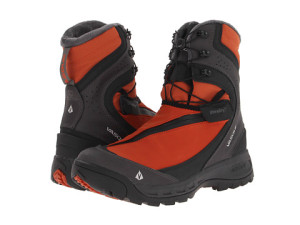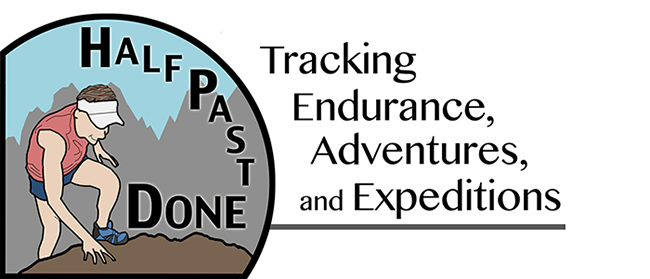 This weekend, I’m traveling to Island Park, Idaho to participate in the Backyard Fat Pursuit 200K. The race takes cyclists through 125 miles of winter trails in the greater Yellowstone area. Among the gear I’m packing are a pair of Vasque Arrowheads, which are insulated boots designed for hiking and running in subfreezing temperatures. The Arrowheads’ features include 200 grams of Thinsulate insulation, reflective lining, and waterproof leather for the outer layer. They’re a fair amount lighter and more flexible than boots designed for winter cycling, and for this reason I’m banking on them being the right solution for pedaling and pushing a bike long distances in difficult winter conditions.
This weekend, I’m traveling to Island Park, Idaho to participate in the Backyard Fat Pursuit 200K. The race takes cyclists through 125 miles of winter trails in the greater Yellowstone area. Among the gear I’m packing are a pair of Vasque Arrowheads, which are insulated boots designed for hiking and running in subfreezing temperatures. The Arrowheads’ features include 200 grams of Thinsulate insulation, reflective lining, and waterproof leather for the outer layer. They’re a fair amount lighter and more flexible than boots designed for winter cycling, and for this reason I’m banking on them being the right solution for pedaling and pushing a bike long distances in difficult winter conditions.
 Last year I wrote about the conundrum of “Feet and Winter Cycling.” When temperatures drop, it becomes increasingly more difficult to keep feet warm when pedaling a bike. Over the past few years, companies have addressed this problem by creating increasingly more insulated and rigid boots for the task. These boots have been met with mostly favorable reviews, but if you look more closely, you see that unfavorable opinions often come from those who use them the most — winter commuters, cyclists who embark on day-long rides during the winter, and those who deal with more volatile conditions such as long sections of pushing, stream crossings, and deep subzero cold. These unfavorable opinions generally contain the same complaints — difficult to use, expensive, and after a few hours, feet were cold.
Last year I wrote about the conundrum of “Feet and Winter Cycling.” When temperatures drop, it becomes increasingly more difficult to keep feet warm when pedaling a bike. Over the past few years, companies have addressed this problem by creating increasingly more insulated and rigid boots for the task. These boots have been met with mostly favorable reviews, but if you look more closely, you see that unfavorable opinions often come from those who use them the most — winter commuters, cyclists who embark on day-long rides during the winter, and those who deal with more volatile conditions such as long sections of pushing, stream crossings, and deep subzero cold. These unfavorable opinions generally contain the same complaints — difficult to use, expensive, and after a few hours, feet were cold.
(I don’t use clipless shoes and have no experience with clipless systems in winter riding, so this post only addresses the use of regular boots with platform pedals.)
My own rigid boots, designed for winter mountaineering, have served me well for years. But issues always arise when I’m out for long days or a wider range of temperatures. The boots are well-insulated, but even the world’s most impenetrable insulation can only do so much when wrapped around a small body part that generates relatively little heat. Keeping body temperatures well-regulated can be tricky, and once core temperatures drop, feet are the first to lose their heat source. I’ve found when this happens, it can take long minutes, sometimes hours, to bring my feet back to life. Even getting out of the saddle and running doesn’t always help, because my feet are so encased in a rigid shell that the muscles are limited in their independent motion. “I need something more flexible,” I thought. “Something that will help me maintain circulation through movement, rather than create this cast-like barrier that keeps my feet cold no matter what.”
Of course, cyclists turning pedals don’t use their foot muscles nearly as much as a runner or hiker, so more insulation is needed to preserve heat. To go along with the Arrowheads, my boyfriend, Beat, designed shin-high overboots with primaloft insulation. These lightweight, gaiter-like layers slip over my boots and act as a vapor and wind barrier without limiting motion. I also use vapor barrier socks to keep moisture from building up inside the boot or overboots. While spinning pedals I often wiggle my toes or flex my feet to promote continued heat production inside the boot, just in case my core decides to start being stingy.
I was in Fairbanks, Alaska, one week ago, and tried my new system in temperatures that ranged from 30 above zero to 35 below zero. This system proved to be satisfyingly comfortable in this wide range of conditions for rides that ranged from three to seven hours. I even crossed through a section of ankle- deep overflow (open water), and the boots stayed dry. Longer durations in warmer temperatures or long periods of pushing may require removal of the overboots or vapor barrier socks to help move moisture away from the skin. But beyond minimal sweat issues, I was impressed by the versatility of this system. My feet started warm and stayed warm, rather than slowly leaking heat as often happened with my other, expensive mountaineering boots. Comfortable shoes that allow the toes and arch to move freely can go a long way toward the goal of happy feet.
Beat’s homemade overboots are my new favorite piece of gear, but similar options are available commercially from Forty Below and other companies that specialize in mountaineering gear. If you’re not as interested in spending 300-plus dollars on your winter cycling shoes, it’s also worth considering combining cheaper overboots with a winter trail-running shoe or hiking boot. Maybe less really is more.
